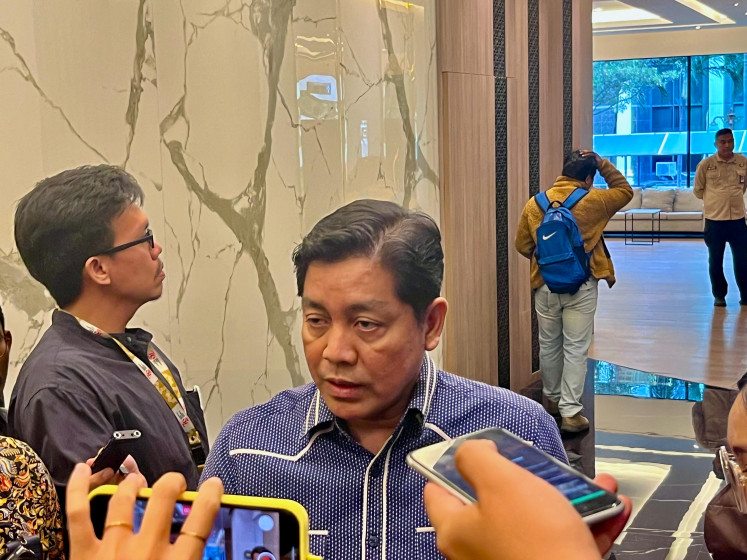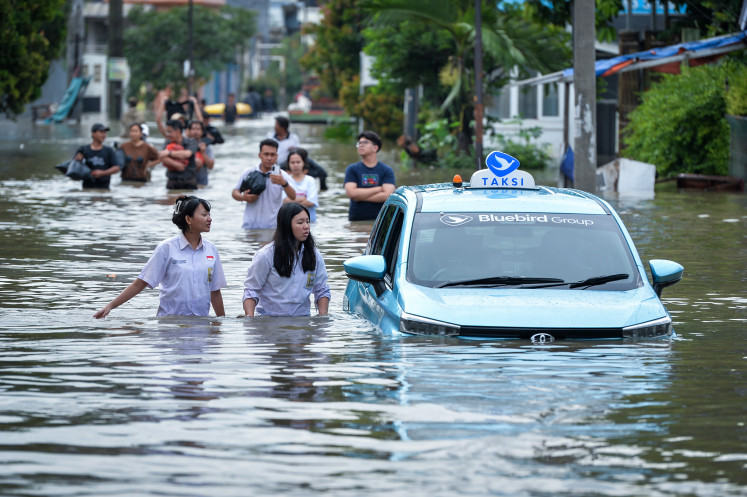Popular Reads
Top Results
Can't find what you're looking for?
View all search resultsPopular Reads
Top Results
Can't find what you're looking for?
View all search resultsCoastal management law review?
Indonesia's coastline (approximately 81,000 kilometers) is one of the longest in the world, surrounding 17,508 islands large and small
Change text size
Gift Premium Articles
to Anyone
Indonesia's coastline (approximately 81,000 kilometers) is one of the longest in the world, surrounding 17,508 islands large and small. In total, around 60 percent of Indonesia's population lives near coasts. As an archipelagic state, Indonesia could gain much by effectively utilizing its coastal and small island resources. This is what, in addition to other considerations, underlies the enactment of Law No. 27/2007 2007 on the management of coastal zones and small islands.
One of the most crucial and controversial parts of the law is the introduction of a property rights system for coastal zones and small islands, namely the right to commercialize coastal zones (HPd), abbreviated as HP3. The owner of a HP3 would be able to utilize a designated area of the coastal zone. HP3 grants ownership of water columns (as well as small islands) in coastal zones.
Theoretically, there could be around 12 nautical miles times 81,000 kilometers of "greenfield" spaces in the sea, ready for exploitation, for up to 20 years. This is indeed a huge business opportunity. For companies whose core business is aquaculture (shrimp ponds, fishes, coral reefs, pearls) and eco-tourism, HP3 would be a crucial issue. What makes HP3 even more valuable is the fact that it can be used as security for loans.
Some NGOs and academics have expressed their concern over HP3. Some are of the opinion that HP3 should be totally rejected and some other only demand its modification by taking into account the rights of local and traditional fishermen. The arguments against HP3 vary. Natural disasters like tsunamis should also be taken into account.
HP3 is also considered to be a pro-rich policy, as it would be unreasonable for traditional and local fishermen to enter into such a scheme which entails high administrative costs.
Let us first consider the arguments above. Indeed, some parts of our coast could be vulnerable of tsunamis, but those located in internal waters are likely to be less exposed to the dangers. For the vulnerable parts, disaster mitigation measures might require the building of artificial or ecological infrastructure (sea defenses) in order to break the waves and such measures -- they argue -- might be in collision with HP3 rights. This concern is nevertheless already addressed by the law.
The second argument on public participation is important. Our Constitution specifically states the economy must be carried out as a "common endeavor" based on familial principle. The Coastal Management Law does say that when granting and monitoring HP3, public aspirations must be taken into account. But this role is only consultative as the public takes no part in the final decision-making process.
In addition to the lack of clarity on the participation of local communities in the granting of HP3 as explained above, the current law also opens a wide opportunity for private parties to apply for HP3 certificates, while ignoring that local and traditional communities have capacity constraints in doing the same thing.
The granting of HP3 certificates might be expensive, as there are quite a few prerequisites that the applicants must fulfill. As corporations are closer to banks, they can get loans easily. On the other hand, local and traditional fishermen may not be as bankable as corporations and the decision-making process there may entail higher transaction costs compared to corporations.
So, there is an asymmetrical position between the players here. The weaker parties must be granted facilities due to these asymmetries and the current law does not seem to guarantee this.
The law actually accommodates existing practices by obligating HP3 holders to "respect" the adat (customary) law. Nevertheless, the language of the law reflects that the rights of traditional societies are not treated on equal footing with certification-based rights. So, there are risks of "expropriation" of the pre-existing customary rights. Adat communities with fishery practices would therefore have a legal standing before the court, as their interest is clearly affected.
Another crucial point would be anticipation of the risks of the HP3 market. As explained above, HP3 could be used as a security for loans. If the market is good, it is theoretically possible to purchase as much HP3 certificates as possible (with loans from banks) and then re-sell to another company for a profit, while the field remains neglected.
The centerpiece of this law is in its implementing regulation and the Constitutional Court can play a role in how it should be drafted. In order to accommodate the interests of traditional and local fishermen, the HP3 structure could also be modified through the court's recommendation.
The writer is the founder of the Center for Law Information (CeLI). He can be reached in movanet@gmail.com.










